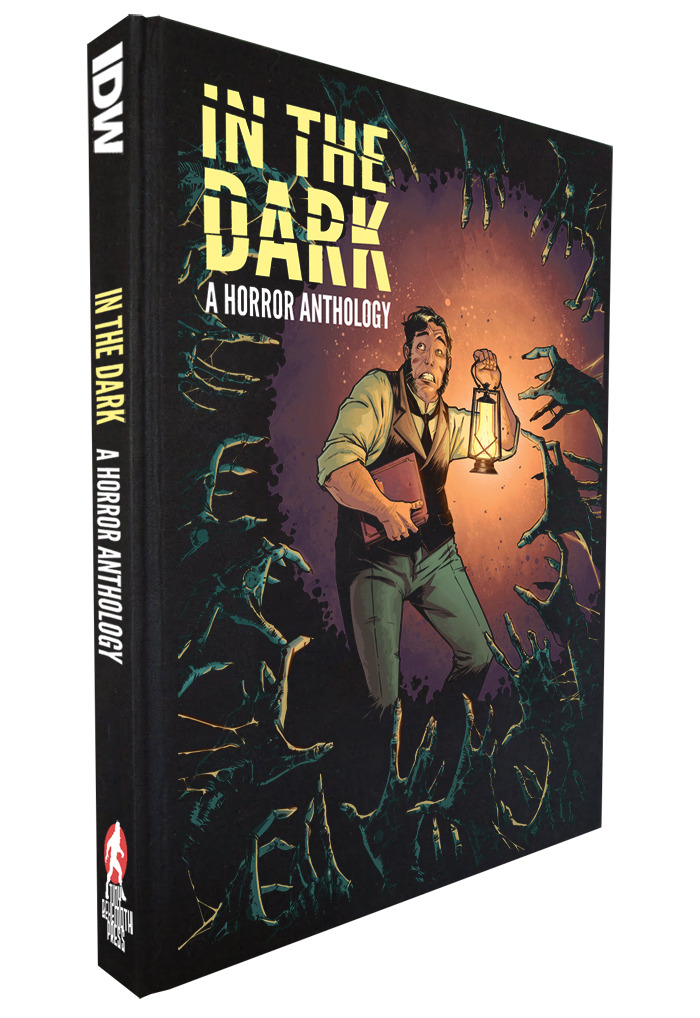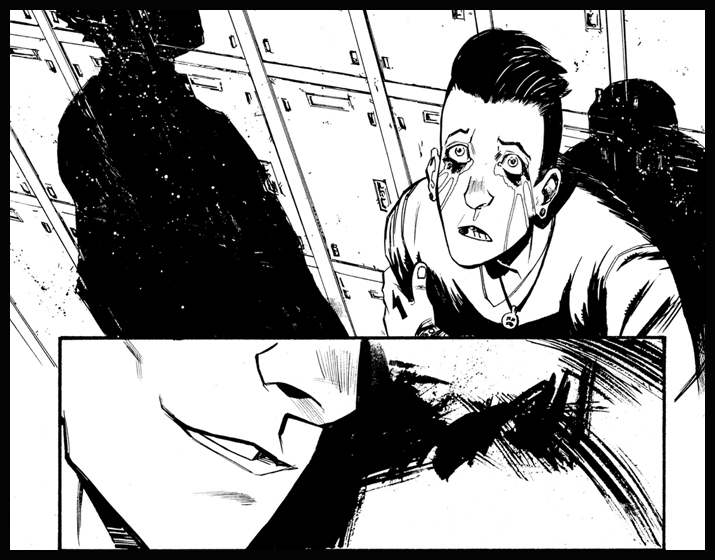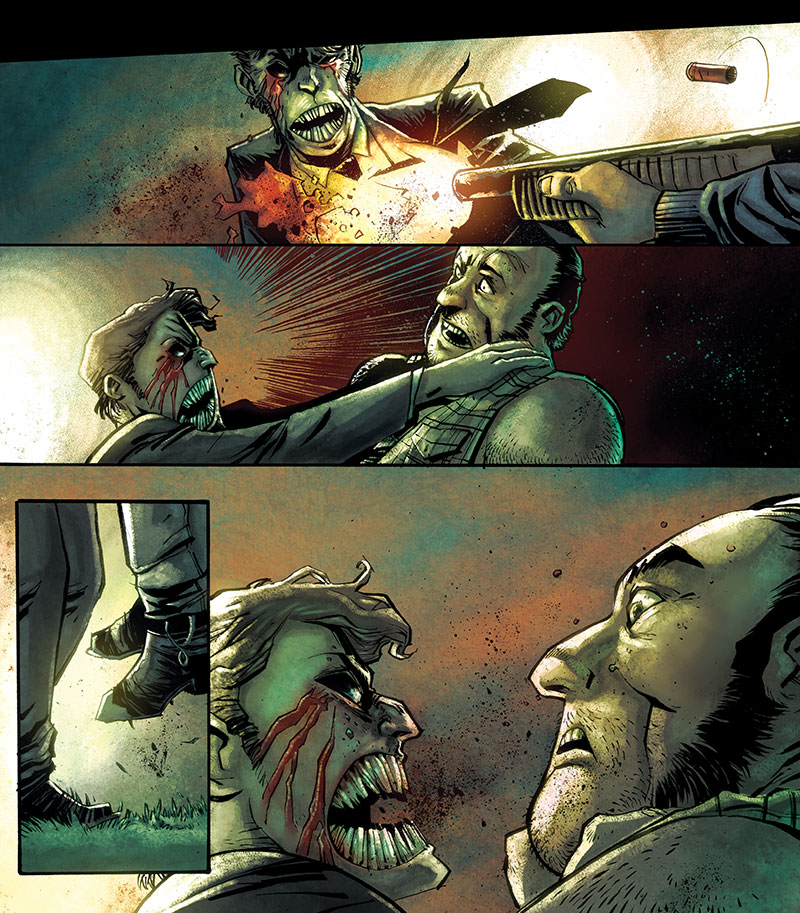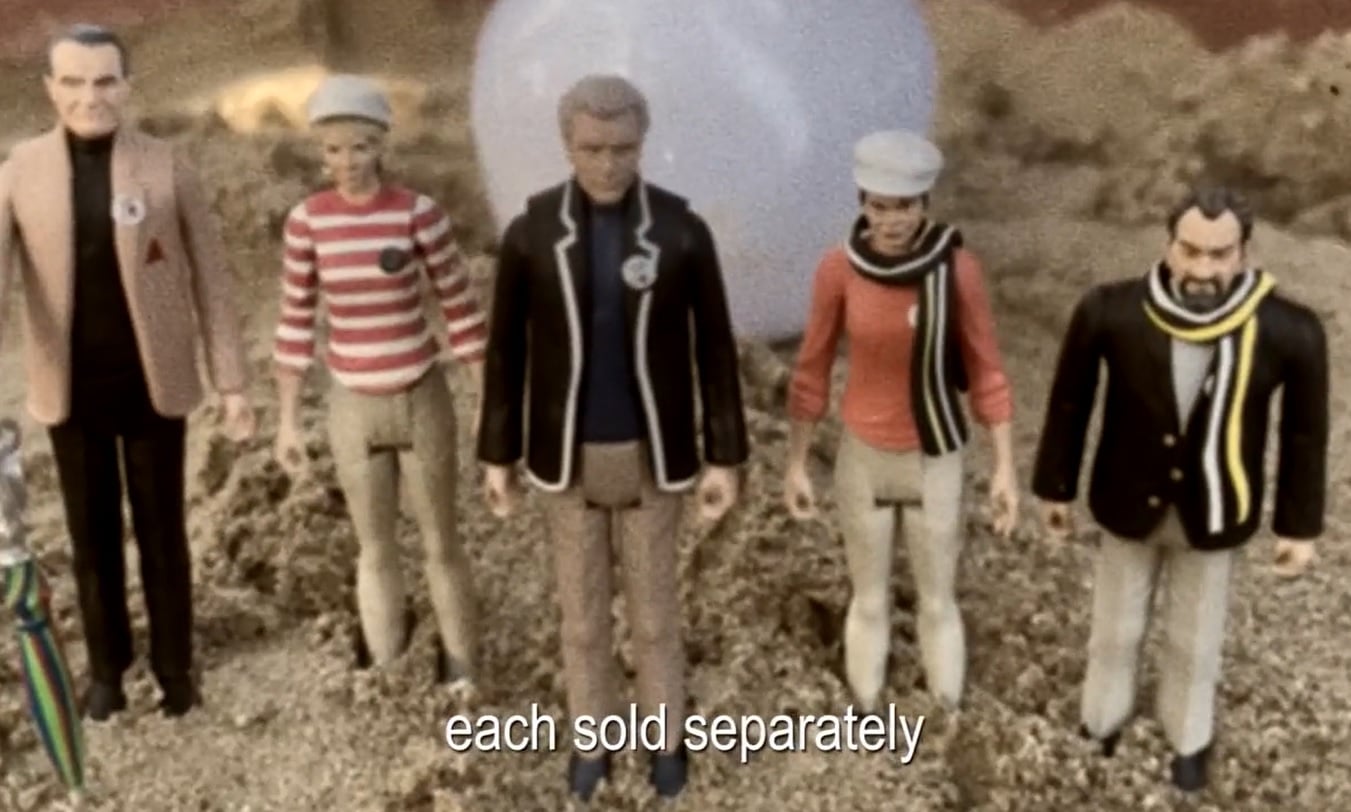Rachel Deering is a writer and letterer best known for her horror projects like Anathema, a werewolf story which was successfully funded through Kickstarter and has gone on to receive pretty unanimous acclaim. You may also recognise her name from other comics like Amelia Cole, and the Womanthology project.
She’s returned to Kickstarter this month for her new project, a horror anthology called ‘In The Dark’, and this time is bringing a whole range of creators with her; including Cullen Bunn, Dalibor Talajic, James Tynion IV, Marguerite Bennett, Marc Laming, Matthew Dow Smith, Paul Tobin, Tim Seeley, Tradd Moore, Michael Moreci and Alison Sampson.
Featuring around 20 short stories, the anthology is looking for $30000 as the funding target – and has already made over $20000 at the time of this posting. For more information on the project – how it came to be, how it was set up, and just HOW scary exactly it’ll be – Rachel was kind enough to speak with me about the project.
Steve: You’ve previously worked on horror comics – such as your series Anathema, about a werewolf – and on anthologies – the Womanthology project. What made you decide to bring those two together and set up a horror anthology?
Rachel: The first comic I ever read was a horror anthology (Warren Publishing’s CREEPY), and they’ve always been my absolute favourite, as both a reader and writer. It was a dream of mine to put together what I considered the “ultimate” horror anthology comic, so when the chance presented itself, I took it and ran.
Steve: When the idea for ‘In The Dark’ first came to mind, were there any creators you knew you wanted to try and get onboard? How was the response when you pitched people the idea of contributing to the project?
Rachel: Oh, absolutely. Nearly all of the creators on the book were personal friends of mine, and I wanted all of them. There are a few dream collaborators who came to the book by way of recommendation, but most of them were a simple text, phone call, or email away. Everyone was very receptive of the idea, and they were all excited at the chance to write a horror story about whatever they wanted. They loved the freedom.
There are a few folks I wasn’t able to snag for this volume, but I’m hoping to get them with the next volume, if I get lucky enough to produce one.
Art by Eryk Donovan
Steve: How do you plan out the creative collaborations, once writers and artists had agreed to contribute – do you look to pair creative teams with similar styles, or do you like stretching people with collaborations they might not have expected?
Rachel: A few of the writers had artists they already wanted to work with, and others looked over my list of confirmed artists and chose someone they knew and wanted. For the others, I would read the stories and get an idea of the tone in my head and assign an artist who I felt could achieve that sort of tone. The pairing of the creative teams was actually one of my favourite parts of the editing process, second only to reading the scripts.
Steve: Do the stories vary in length, or is everybody working with the same number of pages?
Rachel: They all vary. There are stories between 8 and 21 pages. I told the writers to use as much space as it took to tell their story, and tell it well. A few of them really took advantage of that freedom, haha.
Steve: Do you find you’re a pretty tough editor, in general?
Rachel: I guess I don’t consider myself “tough”, really. I get the best story possible out of my writers and artists, but I do it in an encouraging way. I like to think I make revisions fun and exciting for the creatives. When I come to them with an idea on how to improve a scene, they often respond with something like “OH! That’s great!” and go with it. I’ve never had a writer fight me on suggestions. I’ve had a few artists, though…yikes.
Steve: Who’ll be joining you in lettering the anthology? Were there certain letterers you knew would suit the project, and wanted on the project?
Rachel: Thomas Boatwright always hand-letters his stories, but other than that, I will be the only letterer. I’m far too picky about lettering to trust most anyone else, honestly. If I could afford them, I’d get Nate Piekos and Clem Robins to help lighten the workload, but I don’t see that happening.
Art by Mike Henderson and Jordan Boyd
Steve: What is your own story about? Who will you be working with?
Rachel: My story is called Swan Song, and it’s about a man who is walking home late one night when he hears the most beautiful song he’s ever heard in his life. The voice is truly otherworldly in its beauty. The problem comes when he notices that the song is coming from inside a coffin, being dragged behind a gypsy wagon, headed for the countryside. The artist on the story is the absolutely AMAZING Marc Laming. He perfectly understands the type of classic terror tale I’ve written, and his art will be a great compliment to the story.
Steve: What do you personally define as ‘horror’, yourself? Do you feel current trends like dark romance or ‘torture porn’ make it harder to write a true horror which startles people, because they’re becoming desensitised?
Rachel: My personal taste in horror tends to stem from love and loss. You can’t really feel a true sense of dread for a character that you don’t care for on some level. So I feel like horror, for me, is falling in love with a character or characters and then watching them face some sort of threat. The slashers of the 80s and the torture porn stuff today really removed that closeness to the characters and, instead, made them into nothing more than a tally on a body count scorecard.
I think that’s why horror has become more accessible in recent years. People think it’s “fun” now. I don’t feel like this trend has made it more difficult for me to write a truly startling horror story. If it terrifies me, that’s all that really matters. I don’t write for other people, I write for myself. If others happen to enjoy what I’ve written, that’s great, but it’s never my aim.
Steve: What are your favourite kind of horror stories? Is there a particular kind of monster, or theme, or style you can never resist reading about?
Rachel: Creature features! I am in love with monsters, and have been for as long as I can remember. Especially werewolves. For this very reason, Monster Squad has always been one of my favourite movies of all time. So many amazing creatures in that film. And everyone knows about my love of Hammer horror, so that goes without saying, really.
Many thanks to Rachel for her time! You can find her on Twitter here, and the Kickstarter can be found over here.











I’m very interested in knowing how the royalty is split. Does everyone get a per-page royalty? Is it equally divided among all contributors, regardless of how long their comic is? Does seniority come in play?
Anathema was successfully funded through kickstarter from Deering’s pov; kickstarter backers who have not received anything for their money may have a different definition of “success.”
Comments are closed.